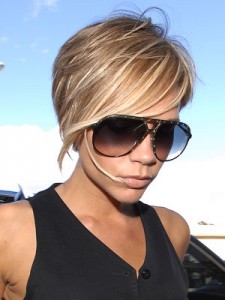 First, let’s talk about what makes hair look like the color we see; blonde, brown, or red. Natural hair color pigments called eumelanin and phaeomelanin are found in the cortex of the hair which is beneath the cuticle layers. Natural haircolor that appears to be cool brown or black has eumelanin; the grainy black/brown pigment found in some hair. When the eumelanin molecules are tightly packed into the cortex the hair appears dark brown or black. Haircolor that appears to be a cool blonde also has eumelanin but it is diffused throughout the inside of the hair shaft which gives it the appearance of being lighter.
First, let’s talk about what makes hair look like the color we see; blonde, brown, or red. Natural hair color pigments called eumelanin and phaeomelanin are found in the cortex of the hair which is beneath the cuticle layers. Natural haircolor that appears to be cool brown or black has eumelanin; the grainy black/brown pigment found in some hair. When the eumelanin molecules are tightly packed into the cortex the hair appears dark brown or black. Haircolor that appears to be a cool blonde also has eumelanin but it is diffused throughout the inside of the hair shaft which gives it the appearance of being lighter.
Visualize a pool table packed with black eight balls – it appears to be black like dark hair. Now imagine a pool table with a quarter of the eight balls spread out on the table – hair that appears to be blonde. Brown hair and blonde hair are essentially the same in terms of components, it’s just a question of how those components are arranged within the hair’s cortex.
We’ve talked about eumelanin but what about phaeomelanin? Most hair contains both, but phaeomelanin is not always visible. It is the orange/yellow pigment found in many natural brunettes or golden blondes. It may not always be visible because the eumelanin present in the hair makes if undetectable to the human eye. Unfortunately, many times when we attempt to lighten brown hair to blonde the phaeomelanin becomes evident leaving undesired warmth and an overall brassy look to the hair color. The professional colorist must successfully learn to transform the hair from brown to blonde by a.) diffusing the eumelanin and b.) eliminating the phaeomelanin sufficiently to produce a desirable result that looks natural and pleasing to the eye.
A common mistake is to try to use permanent color and peroxide to lift and lighten the hair, however this combination will not eliminate phaeomelanin which is why you end up exposing orange/yellow undertones in this type of hair. Some high lift colors with a blue, blue/violet, green/blue or silver (violet) base can effectively lift he hair several levels and tone the unwanted tones simultaneously. The problem with this approach is that these formulas do not always linger in the hair and after several shampoos, the hair is left looking brassy; orange, or yellow/orange because the tone did not stick around. This type of hair requires the use of a hair decolorizer or lightener in order to eliminate the phaeomelanin in the hair leaving a much cleaner, less brassy, and more desirable tone in the hair.
Therefore, pre-lightening and toning the hair is often the best way to achieve a pastel blonde result, or to take a brunette with warm undertones successfully to blonde – by eliminating the phaeomelanin with the lightening powder therefore eliminating brassy tones from the hair. It may seem tedious and complicated but there are no short cuts to obtaining perfect color when there is phaeomelanin in the hair and your client wants to be blonde.
The best colorists will often opt to heavily highlight the hair rather than to lift the hair all over from the root. This tends to give a more natural result, and is easier to maintain. As always, a thorough client consultation and your expertise will help you and your client decide on the best course of action to create and maintain a beautiful blonde result.




